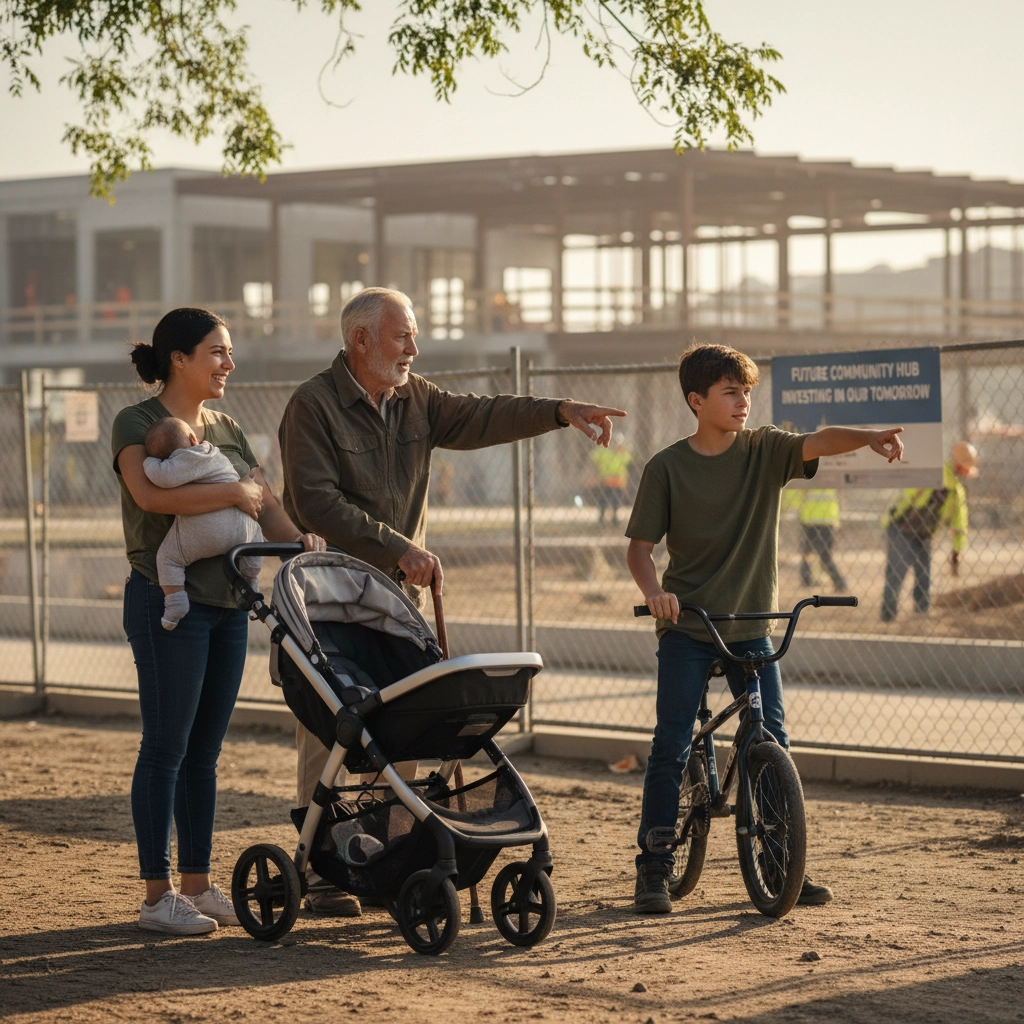Five Ways to Make Your Municipal Project Videos Actually Engaging

Let's be honest: most municipal project videos are about as exciting as watching paint dry on a rainy Tuesday. You know the ones: static shots of officials reading from scripts, endless technical jargon, and zero connection to what residents actually care about.
But here's the thing: it doesn't have to be this way. Your community has amazing stories to tell, and your projects genuinely impact people's lives. The trick is capturing that human element and presenting it in a way that makes people stop scrolling and actually pay attention.
After working with dozens of Ontario municipalities and government agencies, we've seen what works and what falls flat. These five strategies will transform your project updates from mandatory viewing to must-watch content that genuinely engages your community.
1. Start With The Story That Matters To Real People
Before you even think about camera angles or fancy graphics, ask yourself this question: "What problem are we actually solving for residents?"
Your new water treatment facility isn't just about pipes and pumps: it's about families having confidence in their drinking water. That road reconstruction project isn't about asphalt specifications: it's about parents feeling safe when their kids walk to school.

Take the City of Hamilton's approach to their LRT project videos. Instead of leading with construction timelines and budget figures, they started each update by showing real residents and business owners talking about how the project would change their daily lives. One video opened with a small business owner explaining how better transit would bring more customers to her shop. Suddenly, a massive infrastructure project became personal and relatable.
Here's your homework: Before your next project video, spend five minutes writing down three ways this project will actually improve someone's day-to-day life. Start there, not with the technical specs.
2. Show It, Don't Just Say It
Municipal communicators love to explain things. We get it: there's a lot of important information to share. But video is a visual medium, and your audience processes visuals 60,000 times faster than text. Use that to your advantage.
Instead of talking about your new recreation center's features, walk viewers through the space. Show kids splashing in the pool, seniors using the fitness equipment, families gathering for community events. Let the visuals tell the story while your narration fills in the important details.
The Region of Peel created a brilliant example with their waste management facility tour. Rather than a boring presentation about waste processing, they created a visual journey following actual garbage from pickup to processing. Viewers got to see the massive machinery in action, understand the scale of operations, and appreciate the complexity of something most people never think about.

Pro tip: If you're explaining a process, use your hands. Point to things. Move around. Static talking heads are engagement killers, but natural gestures and movement keep viewers connected and help them follow along.
3. Keep It Punchy: Attention Spans Are Shorter Than Ever
Here's some tough love: if your municipal project video is longer than three minutes, you've already lost half your audience. We're not saying you need to sacrifice important information, but you do need to be ruthless about what actually needs to be included.
The most engaging municipal videos follow the "one main message" rule. Each video should have one clear takeaway. Need to cover multiple aspects of a project? Create a series of shorter videos instead of one marathon session.
The City of Toronto mastered this with their transit project updates. Instead of quarterly 15-minute presentations, they create 60-90 second weekly progress videos. Each one focuses on a single development: "This week, we installed the new platform lighting" or "Meet the local contractor working on the accessibility features." Residents can choose to watch one or binge the whole series.
Think of it this way: you're competing with TikTok, Instagram Reels, and Netflix. Your audience is trained to expect engaging content that gets to the point quickly. Work with their expectations, not against them. Want a playbook for squeezing more value out of every update? Check out our guide on turning one project into 15+ social assets: 5 Steps How to Repurpose One Corporate Video Into 15+ Social Assets (Easy Guide for Marketing Leaders).
4. Feature Real Community Voices (Not Just Staff)
Nothing builds trust and engagement like hearing from actual community members. But here's where most municipalities get it wrong: they only include the happy voices or the official endorsements. Real engagement comes from authentic, diverse perspectives.

The Town of Oakville did this brilliantly during their downtown revitalization project. Instead of just featuring the mayor and planning staff, their videos included the teenager who works at the local coffee shop, the elderly couple who've lived downtown for 40 years, the young family who moved there recently, and even some residents who had initial concerns about the changes.
This approach does two powerful things: it shows that you're listening to everyone in the community, and it helps other residents see themselves reflected in the conversation. When viewers hear from people who share their perspective or life situation, they're much more likely to feel connected to the project.
Don't be afraid of including some gentle criticism or concerns either. Acknowledging that not everyone was initially on board, then showing how you addressed those concerns, builds credibility and demonstrates genuine community consultation.
5. Always End With A Clear Next Step
This is where most municipal videos completely drop the ball. They do a great job explaining the project, maybe even make it engaging and interesting, then just... end. No clear direction for viewers who want to learn more or get involved.
Every single video should end with a specific, actionable next step. Not "visit our website for more information": that's too vague. Try "Join us at the community meeting next Thursday at 7 PM at the library" or "Submit your feedback using the online form: link in the description: by November 30th."
The City of Guelph's snow removal explanation videos are a perfect example. Each video ends with specific actions residents can take: "Clear your sidewalk within 24 hours of snowfall," "Sign up for snow removal alerts at guelph.ca/snow," or "Report missed pickups using our app." Viewers know exactly what they can do with the information they just received.

Make your calls-to-action as easy as possible. Include QR codes for quick mobile access, provide direct links in video descriptions, and consider creating simple landing pages specifically for video viewers.
The Bottom Line: Treat Your Audience Like People, Not Statistics
Municipal project videos fail when they treat residents like they're sitting through a mandatory corporate training session. Your community members are real people with busy lives, competing priorities, and genuine interest in what you're doing: if you present it right.
They want to understand how your projects affect their lives. They want to feel heard and included in the process. They want information presented in a way that respects their time and intelligence. Most importantly, they want to feel like their municipal government sees them as partners, not just taxpayers.
Creating engaging municipal project videos isn't about fancy equipment or Hollywood production values. It's about connecting human to human, story to story. When you focus on the real impact of your work and present it authentically, residents respond.
The best part? Once you nail this approach, word spreads. Residents start sharing your videos, showing up to meetings, and becoming active participants in community planning. That's the kind of engagement every municipality dreams of: and it starts with treating your project videos like the powerful communication tools they can be.
Ready to transform your municipal communications? The difference between boring and engaging often comes down to perspective, pacing, and genuine connection with your community's needs. If you want a step-by-step plan and a partner who's done this with municipalities across Ontario, swing by northbrothersfilms.ca and let's chat. And if you're under pressure to prove results, don't miss our deep-dive on measuring video impact: Demystifying Video ROI: Attribution, Analytics & How to Prove Value.
